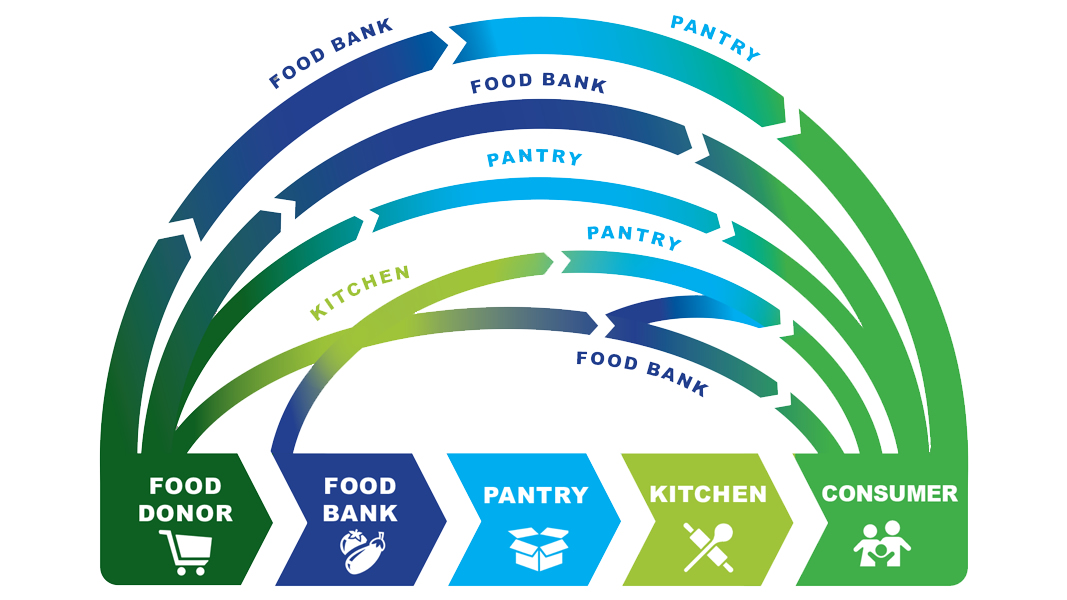Top: “Paths To Food Recovery.” Images courtesy California Resource Recovery Association Edible Food Recovery Technical Council

Volunteers with Abound Food Care in Orange County (CA).
The California Resource Recovery Association and its Edible Food Recovery Technical Council released a “Guidance Document on Food Recovery Funding Models” in March. While the 12-page tip sheet is geared toward California — where the state’s SB 1383 law requires 20% edible food recovery by 2025 — the guidance is valuable to anyone working in food recovery, including other states with diversion mandates. For example, New York State’s food waste disposal ban (currently on generators producing 2 tons/week or greater) includes a food recovery requirement, as does a new law just passed in Washington State. The Guidance Document provides an overview of key components to create and implement a funding program and is divided into three-parts — generating funds, distributing funds, and looking for programs to reduce costs in the current network. Four key principles “drive any funding model” being considered, notes the guidance: Equity, transparency, longevity, and flexibility.
The guidance takes into consideration the reality that “food recovery networks are complicated,” which challenges the approach to finding funding solutions. “These networks are made up of organizations of varying sizes, which each take on a specific role in the movement of food goods,” note the authors. “Most programs currently rely on organizations that collect food, sometimes in the form of large semi-trucks that move pallets of food, and sometimes in the form of grocery bags in the back of personal vehicles. Food may have to be broken down, bagged, or boxed so it can be better managed by consumers, or food pantries that have limited storage.
“As we push the envelope and work to reduce waste, and consider the complexities of the phases of regulatory compliance, we must also consider the role of the reprocessing and repackaging kitchens. These kitchens, when used effectively, can extend the life of food, and/or help break bulk products down into ready-made meals. Not only can they help reduce waste, but they also play a significant role in creating healthy meals for individuals who may otherwise be challenged in making food for themselves.”
In California, individual jurisdictions and individual food donors are not required to meet the 20% edible food recovery rate, according to Edgar & Associates, a consulting firm that assists in edible food recovery program design. Instead, SB 1383’s regulations require mandated food donors to donate the maximum amount of their still fresh food that they would have sent to landfills. Each jurisdiction’s food recovery program must assess current edible food recovery capacity.













